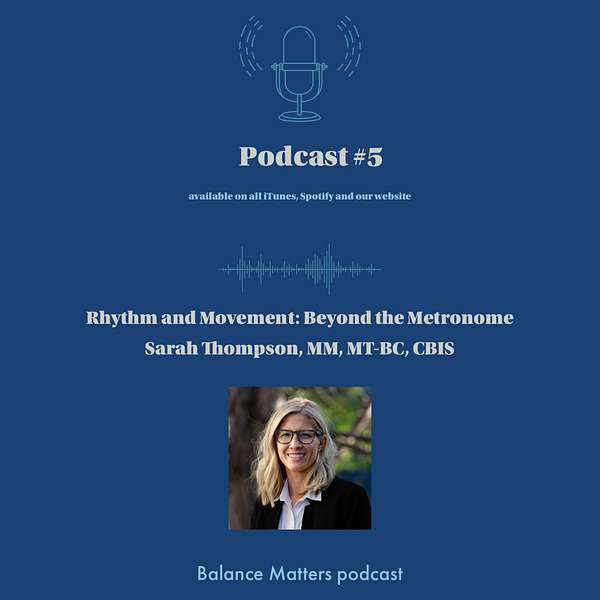
Balance Matters: A neuro physical therapist’s journey to make “Sense” of Balance
Balance Matters: A neuro physical therapist’s journey to make “Sense” of Balance
Rhythm and Movement: Beyond the Metronome with Sarah Thompson, MM, MT-BC, CBIS
Music can lift moods, help with studying, and make workouts more productive and enjoyable. I know I enjoy working out to music, I run further and push myself more when I listen to music.
While all of those ways of listening to music are important, there is a difference between recreational music, therapeutic music, and clinical music therapy.
Today we are going to learn from Sarah, a board-certified music therapist about the benefits of music therapy.
Sarah's 2 tips to non- music therapists
1. Create a rhythm using words and then get your metronome to match it and try to emphasize the most difficult part.
2. Consider double priming, especially if someone is moving below 60 beats per min.
Listen to learn more...
Sarah Thompson, MM, MT-BC, CBIS is a board-certified music therapist who has used music to influence movement for 17 years. She specializes in working with survivors of neurologic injuries and individuals living with neurologic diseases. She is the founder and CEO of Rehabilitative Rhythms and is currently a PhD student. She is a lifelong learner who is passionate about providing evidence-based practice in healthcare while keeping compassion and patient satisfaction a top priority.
Resources :
Grahn, J. A., & Brett, M. (2007). Rhythm and beat perception in motor areas of the brain. Journal of cognitive neuroscience, 19(5), 893-906.
Leow, L. A., Parrott, T., & Grahn, J. A. (2014). Individual differences in beat perception affect gait responses to low-and high-groove music. Frontiers in human neuroscience, 8, 811.
Thompson, S., Hays, K., Weintraub, A., Ketchum, J. M., & Kowalski, R. G. (2020). Rhythmic Auditory Stimulation and Gait Training in Traumatic Brain Injury: A Pilot Study. J Music Ther. doi:10.1093/jmt/thaa016